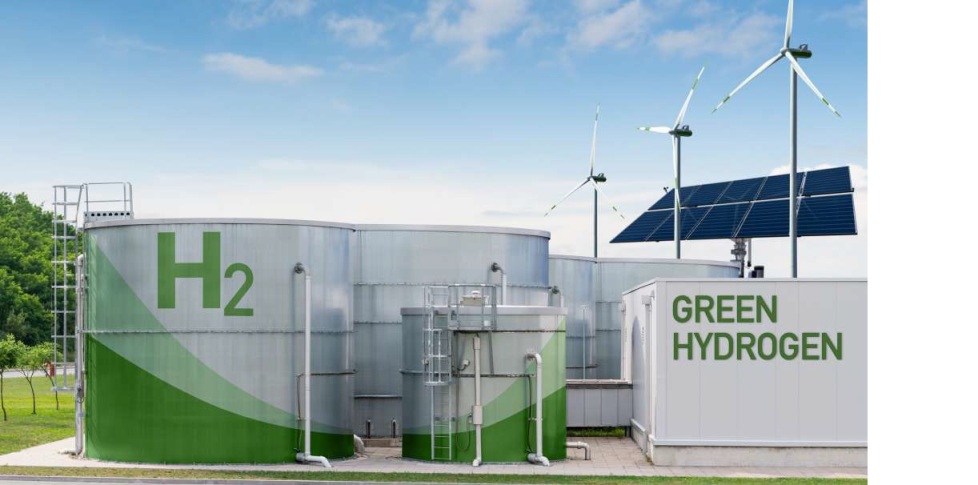A newly-released report “Green Hydrogen: India’s opportunity for a strategic shift in global energy trade” by Alvarez & Marsel (A&M), a leading global professional services firm, notes that India is amongst the few countries that are very well positioned to tap the global green hydrogen economic opportunity, which is estimated to be $0.5 trillion by 2050.
At a recent media roundtable held in Mumbai, Santosh Kamath, Managing Director, Alvarez & Marsel, and author of the report explained that India was well placed in global green hydrogen competiveness, thanks to its high ranking in terms of infrastructure and other green hydrogen ecosystem enablers. In India’s league are countries like UAE, Saudi Arabia and USA.
While China (Mainland) also ranks high in terms of ecosystem enablers, the region would be less competitive than India in terms of levelized cost of green hydrogen (LCOH).
The report has estimated that India’s LCOH, estimated at $3.2 per kg could eventually come down a very competitive $1.8 per kg, by 2030.
Kamath observed that several initiatives in the green hydrogen domain are already in place in India, largely envisaged under the “National Green Hydrogen Mission”. Apart from these, the Alvarez & Marsel top official advocated for more enablers with a view to creating green hydrogen demand of 1 million tonnes per year, by 2027. This can be achieved by de-risking projects by creating credible offtake guarantees. This is similar to the model adopted by Solar Energy Corporation of India (SECI) in its solar and wind auctions.
India needs to aggressively support its green hydrogen initiatives, Santosh Kamath asserted, adding that the country could get a solid prime-mover advantage. “By moving early, we can stake a claim to a larger share of the global energy trade, substitute some of our imports, especially LNG, and spur domestic GDP growth. By 2030, this could lead to $3–5 billion of exports and $7–15 billion of import substitution, opening the doors to a much larger opportunity in the decades ahead.”
The report highlights that by 2030, India can also tap an export opportunity of around 12 million tonnes, largely arising from the European Union, Japan, Korea, etc.
The full report is available on the official website of Alvarez & Marsel, and can be accessed here.
Electrolyzer technology
Sharing insights on the technical front, Kamath explained that producing 1 million tonnes of green hydrogen annually would need 10 GW of electrolyzer capacity and 20-25 GW of renewable energy (RE) generation capacity. Given that the National Green Hydrogen Mission has envisioned India to produce 5 million tonnes of green hydrogen by 2030, the country would need around 50 GW of electrolyzer capacity.
Dwelling more on the electrolyzer technology front, Santosh Kamath noted that alkaline-based electrolyzer technology has been around, including in India, for several decades. “There is no technology risk on the alkaline side. It is more about the scale. How do you handle hydrogen at scale? That is the learning curve for India.”
As an alternative to alkaline technology, a new technology called proton exchange membrane (PEM) technology is also something that the world is working on, Kamath explained. PEM technology is better equipped to handle the inherent intermittency of renewable energy generation, which makes it very suitable for green hydrogen production. “The advantage of PEM is that it can better handle variable renewable energy whereas alkaline requires more stable electricity generation. All said, work is also underway globally to make alkaline also amenable to variable electricity generation,” Kamath pointed out.
It is encouraging to note that several Indian companies have tied up with foreign partners for electrolyzer technology transfer. Incidentally, Europe and US are major centres for development of modern electrolyzer technology.
Opportunity for India
Dwelling more on the alkaline electrolyzer technology front, Santosh Kamath said that the heart of the electrolyzer is its “core stack” around which there is significant balance of system (BoS) work, which typically includes transformers, valves, piping, etc. Even though the core stack is imported, Indian suppliers can exploit significant opportunity around the BoS aspect, he noted. “It is like the solar photovoltaic equipment domain where India is producing modules using imported solar cells,” Kamath explained with an analogy.
Featured photograph sourced from Alvarez & Marsel

